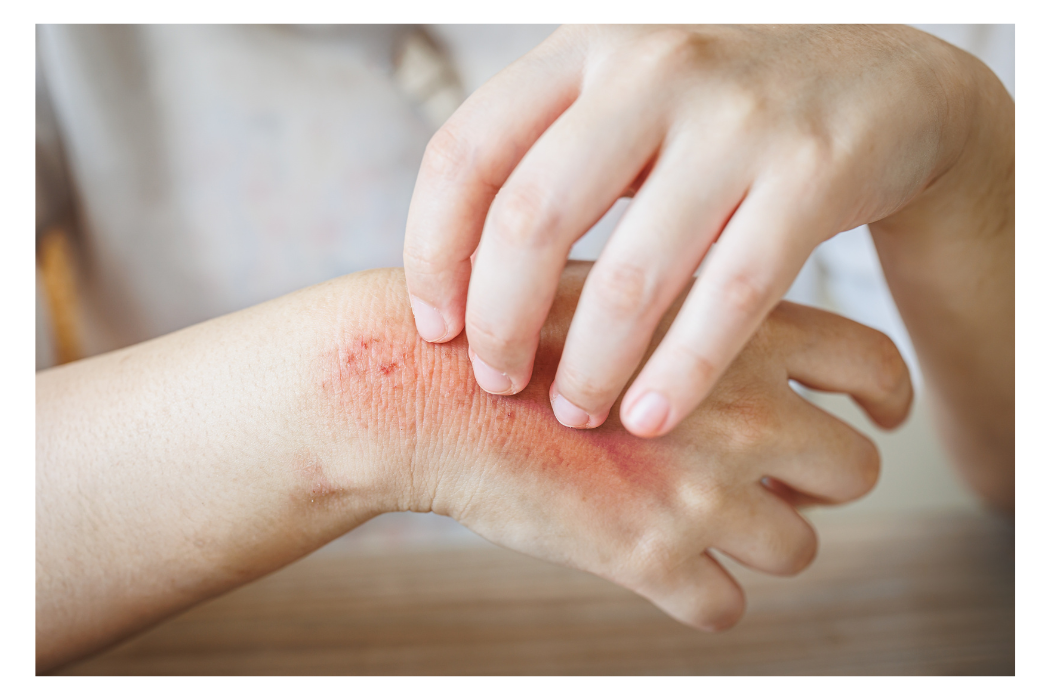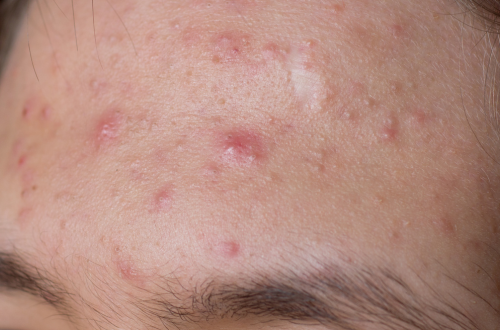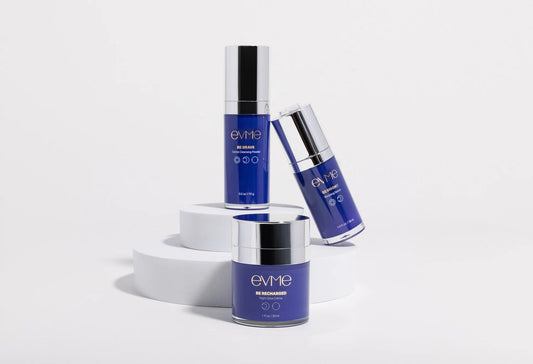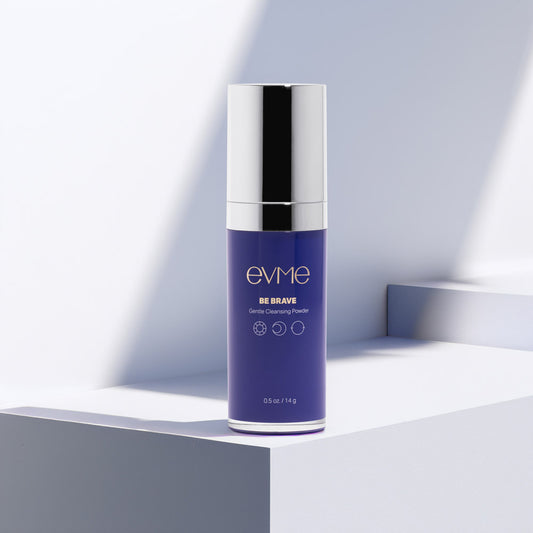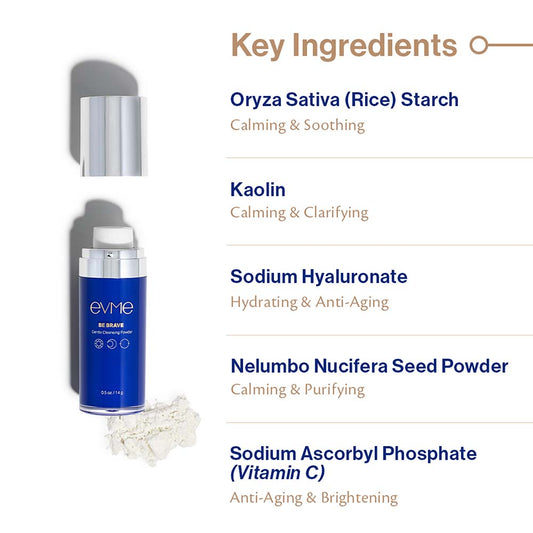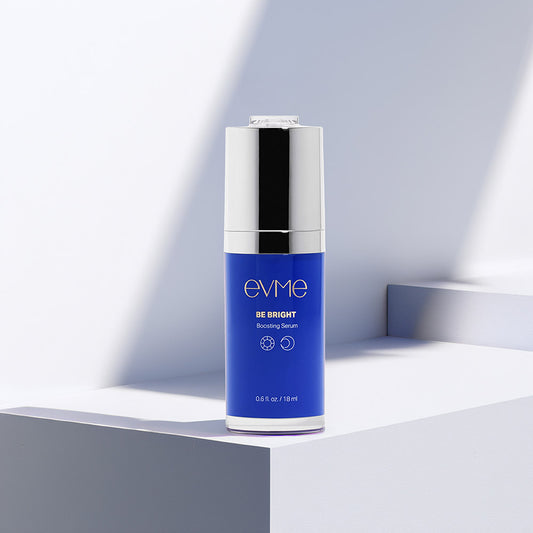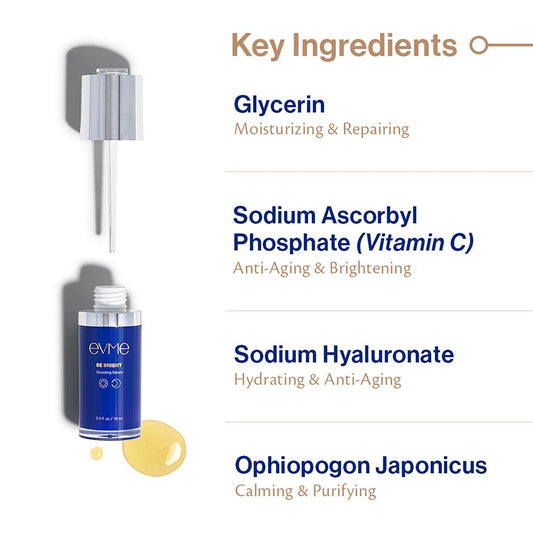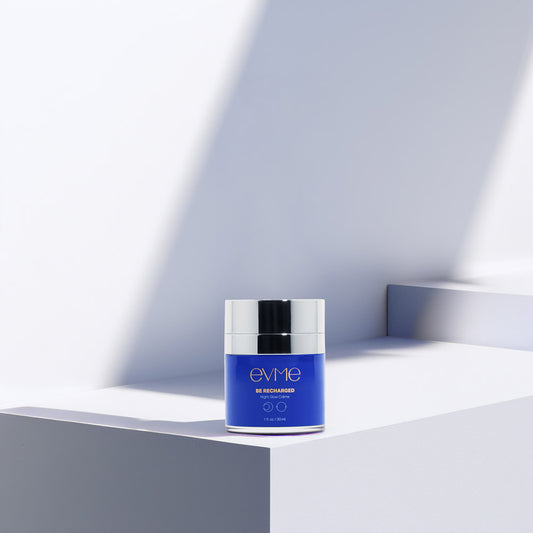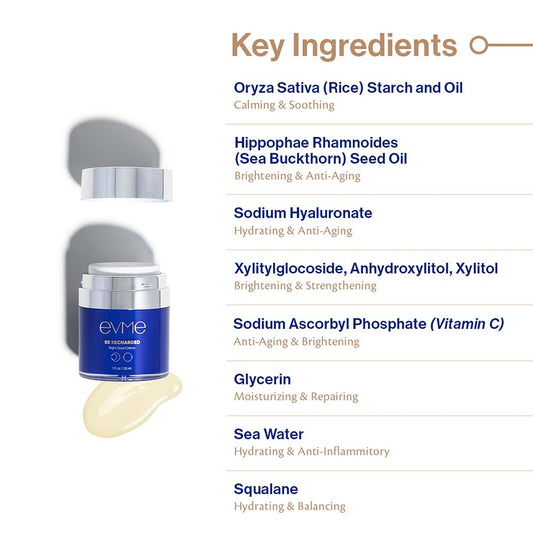Try Evme, allergist-created luxe skincare for sensitive and allergic skin.
Shop All ProductsDon't Get Burned by Sunscreen Allergies!
May 16, 2023

Back To Articles
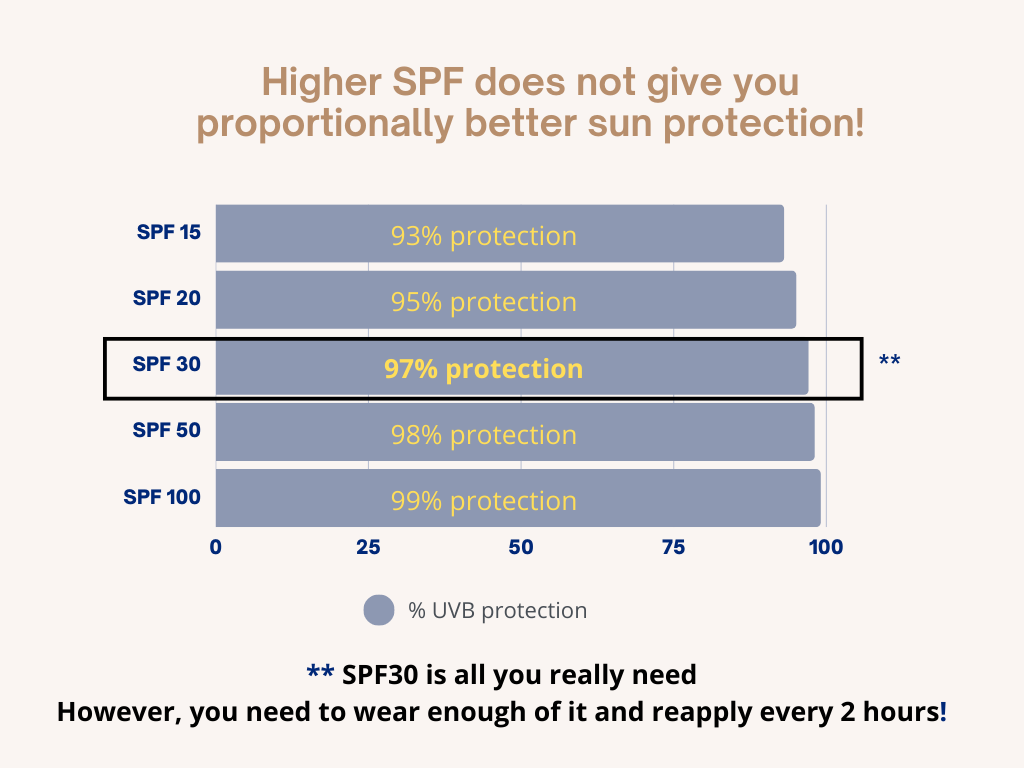
With the summer approaching, I often find myself dreaming about warmer weather and fun times in the sun!
Unfortunately for me, the happy thoughts can occasionally get dampened by the question of what to do about sun protection —specifically sunscreen. As a person with allergic skin, I have found it extremely difficult to find a good sunscreen that doesn’t cause me to react. I know I am not alone as many of my patients have shared their own personal struggles with this too.
So...how do we find a sunscreen that doesn’t cause a reaction? It helps to understand a little bit more about the composition of sunscreens.
There are two major categories of sunscreens that exist: mineral sunscreens and chemical sunscreens.
Mineral sunscreen active ingredients: Zinc Oxide and Titanium Dioxide
Chemical Sunscreen active ingredients: avobenzone, octinoxate, homosalate, octisalate, octocrylene, oxybenzone, and benzophenone
What you need to know about Mineral sunscreens:
- Mineral sunscreens are preferred for sensitive and reactive skin, rarely causing allergic reactions.
- Beware added fragrances and preservatives which may cause reactions - go for the fragrance-free versions and keep your eye on the ingredients!
- Read through the other (inactive) ingredients: Some sunscreens marketed as “mineral” sunscreens may also contain chemical components which may be allergenic.
- Mineral sunscreens can sometimes be a little harder to spread than chemical sunscreens and often leave a white cast. It’s still worth it in my opinion!
What you need to know about Chemical sunscreens:
- Many chemical sunscreen ingredients are known to cause contact dermatitis and skin rashes.
- There has been a lot of controversy surrounding chemical sunscreens regarding possibilities of affecting coral reefs and aquatic life, with a ban on some of these ingredients in a few select locations (primarily oxybenzone, benzophenone-3, octinoxate, and octocrylene).
What else should I look for in a sunscreen?
When choosing a sunscreen, it is important to think about both UVA and UVB rays — two types of UV exposure we get from the sun, that can both cause damage to our skin. UVA contributes to skin aging, while UVB is more involved in causing sunburn. Blocking both of these is important to prevent skin cancer. This is why it is crucial to use a sunscreen labeled as “Broad spectrum” which carries protection against both UVA and UVB rays.
The SPF, or the sun protection factor, of a sunscreen only tells us how good it is at protecting you from UVB rays. My patients are often looking for recommendations for sunscreens with higher SPF numbers, because the higher the number, the better, right? Well, I’m going to tell you something that may blow your mind!
Higher SPF does NOT give you proportionally better sun protection!
Did you know that SPF 30 gives you 97% protection from UVB rays, while SPF 100 gives you 99% protection?? Nothing will give you 100% protection. SPF30 is all you really need! Just remember to wear enough sunscreen (~1oz or 1 shot glass worth of sunscreen for your entire body) and re-apply every 2 hours at the least, or more often if you are sweating or in the water.
The bottom line: If you have sensitive or allergic skin, reach for a fragrance-free SPF30 Mineral sunscreen.
I am thrilled to announce that Evme is getting close to releasing an amazing new broad spectrum mineral sunscreen day cream (SPF30) with a non-nano Zinc Oxide base, that won’t cause your skin to react, and keep you well protected! We are currently in our final stage of testing and hope to have it ready within the next few months - fingers crossed!!
Recommended articles
close
Evme Sans-Allergenic Skincare Products
- Choosing a selection results in a full page refresh.



